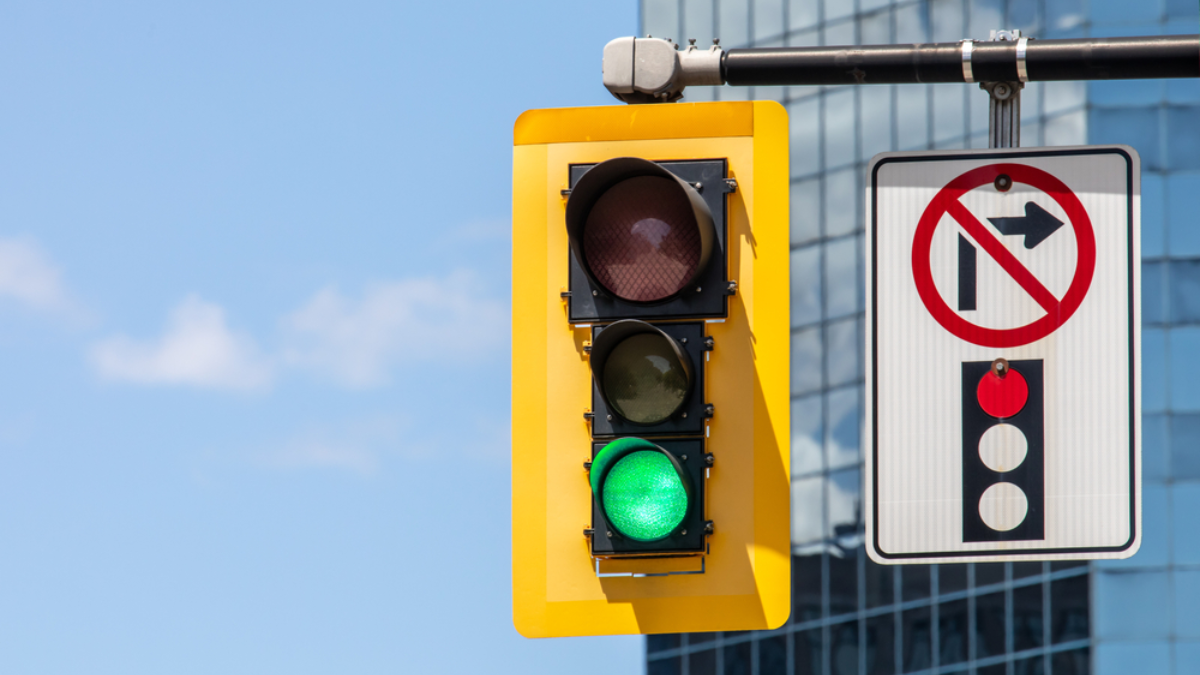ANN ARBOR, MI — In a concerted effort to improve pedestrian and cyclist safety, the Ann Arbor City Council has enacted a ban on right turns at red lights across 50 intersections within the downtown area.
This initiative, rooted in the city’s commitment to Vision Zero—a strategy aimed at eliminating traffic fatalities and severe injuries—reflects a growing trend among U.S. cities to reevaluate traffic policies in favor of vulnerable road users.
Scope and Implementation
The prohibition applies to intersections bounded by Kingsley Street to the north, State Street to the east, Hoover Avenue to the south, and First Street to the west. This area encompasses key commercial zones, residential neighborhoods, and the University of Michigan campus, all characterized by high pedestrian activity.
The City Council approved the resolution in October 2022, following deliberations that included public input and safety assessments. The measure passed with a 9-2 vote, indicating substantial support among council members for the safety initiative.
To inform motorists of the new restrictions, the city has installed clear “No Turn on Red” signage at the affected intersections. These signs are designed to be conspicuous and are placed in accordance with traffic engineering standards to ensure visibility and compliance.
Rationale Behind the Ban
The decision to restrict right turns on red stems from data indicating a significant proportion of pedestrian and cyclist accidents occur during such maneuvers. From 2017 to 2021, there were 90 crashes involving pedestrians in the downtown core.
Council Member Erica Briggs, a co-sponsor of the resolution, emphasized the community’s concerns: “We’ve heard from many residents about the need to enhance safety for pedestrians and cyclists. This measure is a step toward making our roads safer for all users.”
The ban also aligns with Ann Arbor’s broader objectives to promote sustainable transportation modes, including walking and cycling, by creating a safer and more inviting environment for non-motorized road users.

Community Response
The initiative has garnered mixed reactions from the community. Safety advocates and pedestrian groups have lauded the move, citing the potential for reduced accidents and a more walkable downtown.
Conversely, some drivers express concerns about potential traffic delays and the need for increased awareness of the new rules.
To address these concerns, the city has launched a public education campaign, including informational materials and community outreach, to ensure residents and visitors are informed about the changes.
Additionally, the Ann Arbor Police Department is collaborating with city officials to monitor compliance and provide guidance during the transition period.
Exemptions and Enforcement
Notably, the ban includes exemptions for public transportation vehicles, such as buses, to maintain efficient transit operations. Enforcement of the new regulation involves a combination of signage, public education, and, where necessary, citations for non-compliance.
The city emphasizes that the primary goal is to enhance safety rather than penalize drivers. As such, initial enforcement efforts focus on educating motorists about the new rules and encouraging voluntary compliance.
Broader Context and Future Outlook
Ann Arbor’s decision reflects a national reevaluation of the “right turn on red” policy, originally adopted in the 1970s to conserve fuel during the energy crisis. Recent studies and urban planning trends have highlighted the potential risks associated with this practice, particularly in areas with high pedestrian density.
Cities like Washington, D.C., and San Francisco have implemented or are considering similar bans, indicating a shift toward prioritizing pedestrian safety over vehicular convenience.
Ann Arbor’s approach serves as a case study for other municipalities contemplating similar measures. The city’s commitment to data-driven policy and community engagement provides a framework for balancing safety objectives with public acceptance.
Conclusion
The implementation of a right-turn-on-red ban in downtown Ann Arbor marks a significant step in the city’s efforts to enhance pedestrian and cyclist safety. By addressing a common source of traffic conflicts, the city aims to create a more secure and accessible environment for all road users.
As urban areas nationwide grapple with similar challenges, Ann Arbor’s experience may inform broader policy discussions on traffic safety and urban mobility.
For more information on Ann Arbor’s traffic regulations and safety initiatives, visit the official City of Ann Arbor website:
👉 https://www.a2gov.org
Disclaimer – Our team has carefully fact-checked this article to make sure it’s accurate and free from any misinformation. We’re dedicated to keeping our content honest and reliable for our readers.
